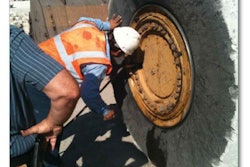AggBeat
Congress moves forward with seven-month extension of highway and transit programs in the nick of time.
by Tina Grady Barbaccia
In early March, Congress passed another extension of highway, transit, and highway safety programs. The seven-month extension, passed by a 421-to-1 vote in the House and by voice vote in the Senate, was signed by President Obama on March 4. The extension expires Sept. 30, 2011.
H.R. 662, the Surface Transportation Extension Act of 2011, was introduced in the House by the Republican and Democrat leaders of the Transportation and Infrastructure Committee on Feb. 11, 2011. The legislation freezes funding at fiscal year 2010 levels for highway, transit, and highway safety programs and sets the total obligation limitation levels for transportation funding at $52.7 billion for FY 2011. The obligation authority consists of $42.46 billion for highway funding and $10.33 billion for mass transit funding.
The current federal surface transportation legislation, the Safe, Accountable, Flexible, Efficient, Transportation Equity Act: A Legacy for Users (SAFETEA-LU), expired Sept. 30, 2009. It has since been extended with short-term measures, but a long-term reauthorization has not yet occurred. SAFETEA-LU’s predecessor bill, Transportation Equity Act for the 21st Century, or TEA-21, was extended 12 times before SAFETEA-LU was passed.
Transportation and Infrastructure Committee Chairman John L. Mica (R-Fla.) says that the legislation will provide some stability for state transportation departments and allow DOTs to continue planning and constructing transportation projects through the summer construction season. “This extension of transportation programs will allow more time for the Transportation and Infrastructure Committee to develop a fiscally responsible, long-term reauthorization of transportation programs to create jobs and build our nation’s infrastructure,” Mica says in a written press statement.
The American Association of State Highway and Transportation Officials (AASHTO) notes that the vote came one day after the organization sent a letter to all members of Congress urging “a swift adoption” of the measure. The full text of the letter is available at bit.ly/Horsley030111.
“While AASHTO continues to support congressional efforts to enact a well-funded, long-term surface transportation bill, the absence of such a bill makes this extension essential to creating and sustaining jobs and maintaining America’s transportation infrastructure,” wrote AASHTO Executive Director John Horsley in the letter to Congress. “Furthermore, this extension provides much needed certainty for the construction industry, states, and localities as they begin the 2011 construction season.”
The National Stone, Sand & Gravel Association (NSSGA) also sent a letter to Congress urging for an extension. However, NSSGA points out that passing a longer extension “is essential for states to continue funding of projects and for business planning and resource allocation, particularly when the construction sector has an unemployment level twice the national average.”
“Our members are the crushed stone, sand, and gravel operations in almost every congressional district in the country and the principle suppliers of the materials used to build and rehabilitate our nation’s highways, roads, and bridges,” said Jennifer Joy Wilson, president and CEO of NSSGA, in the letter to Congress.
“For the aggregates industry, the passage of five short-term extensions since the expiration of SAFETEA-LU on Sept. 30, 2009, has had a devastating impact. The lack of certainty in the federal highway market is preventing states and local governments from advancing highway projects. Because our industry makes capital investment and human resource decisions based on projections about the direction of the highway construction market over the long term, a drawn out approach involving short-term extensions depresses the construction sector further.” (For the full text of NSSGA’s letter to Congress, go to http://www.nssga.org/communications/support.pdf.)
Association of Equipment Manufacturers (AEM) President Dennis Slater says that although the extension was necessary, it hasn’t solved what the nation needs in the long term. “America’s urgent need to rebuild roads, highways, and bridges requires a long-term strategy; we can’t afford any more delays,” Slater says. “If the President wants manufacturers to put people to work and jumpstart the economy, he will insist on a six-year Highway bill to build safer roads and bridges, and work with the Congress to find a way to get it done.”
Transportation Extension Timeline:
| 2/11/2011 | Introduced in House. |
| 2/28/2011 | Reported by the Committee on Transportation and Infrastructure. H. Rept. 112-18, Part I. |
| 2/28/2011 | Committee on Ways and Means discharged. |
| 2/28/2011 | Committee on Natural Resources discharged. |
| 2/28/2011 | Committee on the budget discharged. |
| 3/2/2011 | Passed/agreed to in House: Passed by recorded vote: 421 – 4 (Roll no. 160). |
| 3/3/2011 | Passed/agreed to in Senate: Passed Senate without amendment by voice vote. |
| 3/3/2011 | Presented to President. |
| 3/4/2011 | Signed by President. |
| 3/4/2011 | Became Public Law No: 112-005. |












